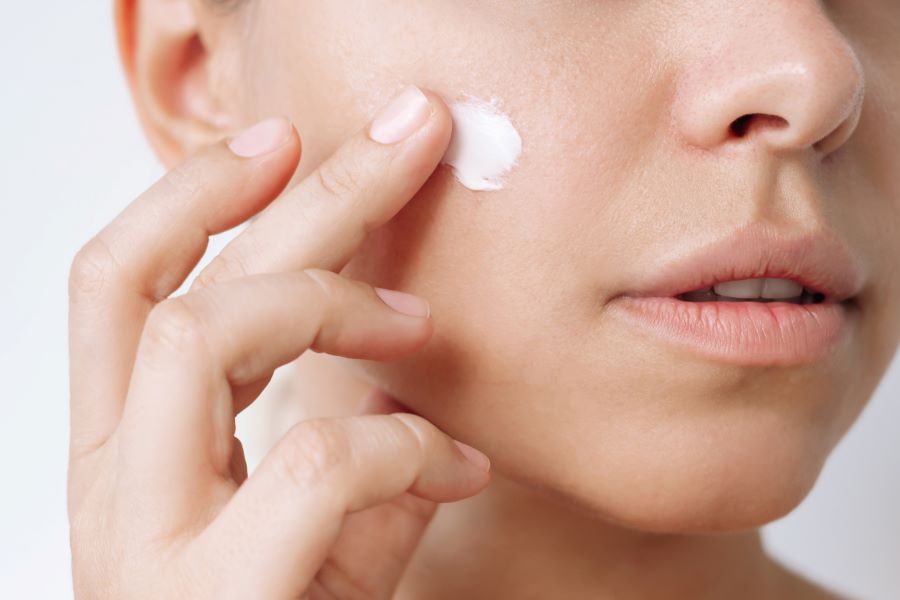Skin Cycling: The New Rhythm of Skincare
The beauty industry is constantly evolving, with new trends and techniques emerging at a rapid pace. Among these innovations, skin cycling has emerged as a revolutionary approach to skincare that's captivating dermatologists and beauty enthusiasts alike. This method, which involves strategically rotating skincare products throughout the week, promises to optimize skin health and address multiple concerns simultaneously. Unlike traditional skincare routines that remain static, skin cycling introduces a dynamic element that keeps skin cells on their toes, potentially leading to improved texture, reduced signs of aging, and a radiant complexion. As this trend gains momentum, it's reshaping how we think about skincare and challenging long-held beliefs about product application.

Dr. Whitney Bowe, a board-certified dermatologist in New York, is credited with coining the term “skin cycling” and popularizing the method on social media platforms. Her approach was born out of a desire to create a balanced skincare routine that would maximize benefits while minimizing irritation. By alternating between active ingredients and recovery nights, Dr. Bowe’s method aims to give the skin time to repair and strengthen between treatments.
The skin cycling trend gained significant traction in 2022, spreading rapidly across TikTok and Instagram. Its popularity can be attributed to its simplicity, adaptability, and the promising results reported by early adopters.
The Science Behind Skin Cycling
At its core, skin cycling is based on the principle of hormesis – the idea that controlled stress can stimulate beneficial adaptive responses in biological systems. In the context of skincare, this means introducing controlled “stress” to the skin through active ingredients, followed by periods of rest and recovery.
During exfoliation nights, the skin is encouraged to shed dead cells and stimulate cell turnover. Retinoid nights focus on promoting collagen production and accelerating cell renewal. The recovery nights that follow allow the skin barrier to repair and strengthen, preparing it for the next cycle of active ingredients.
This cyclic approach may offer several advantages over traditional daily routines. By spacing out the use of potent ingredients, it can reduce the risk of irritation and sensitivity. Additionally, the recovery periods may enhance the skin’s ability to absorb and utilize active ingredients more effectively.
Recent studies have begun to explore the potential benefits of skin cycling. While more research is needed, preliminary findings suggest that this method may lead to improved skin texture, reduced fine lines, and better overall skin health compared to constant daily use of active ingredients.
Implementing a Skin Cycling Routine
A typical skin cycling routine spans four nights, though variations exist to suit different skin types and concerns. Here’s a basic outline of the four-night cycle:
Night 1 (Exfoliation): Use a chemical exfoliant, such as glycolic acid or salicylic acid, to remove dead skin cells and unclog pores.
Night 2 (Retinoid): Apply a retinoid product to stimulate collagen production and cell turnover.
Nights 3 and 4 (Recovery): Focus on hydration and barrier repair using gentle, nourishing products.
After the fourth night, the cycle begins again. This pattern allows for twice-weekly exfoliation and retinoid use, with ample recovery time in between.
It’s important to note that skin cycling should be tailored to individual needs. Those with sensitive skin may benefit from extended recovery periods, while those with more resilient skin might incorporate additional active nights.
Benefits and Potential Drawbacks
Proponents of skin cycling report numerous benefits, including improved skin texture, reduced acne breakouts, and a more even skin tone. The method’s structured approach can also simplify skincare routines and potentially save money by reducing the number of products used daily.
However, skin cycling isn’t without potential drawbacks. Some individuals may find that their skin responds better to consistent, daily use of certain ingredients. Additionally, the cyclical nature of the routine may make it challenging to pinpoint which specific product or step is responsible for observed changes in skin condition.
It’s also worth noting that skin cycling may not be suitable for everyone. Those with certain skin conditions or those using prescription skincare products should consult with a dermatologist before adopting this method.
The Future of Skin Cycling
As skin cycling continues to gain popularity, it’s likely to evolve and diversify. We may see the emergence of personalized cycling routines based on factors such as age, skin type, and specific skin concerns. Technology could play a role in this personalization, with apps or smart skincare devices helping users optimize their cycling schedules.
The trend is also influencing product development in the beauty industry. Some brands are now creating products specifically designed for skin cycling routines, with clear labeling for exfoliation, retinoid, and recovery nights.
Moreover, the concept of cycling may extend beyond facial skincare. Body care, haircare, and even makeup application could potentially benefit from cyclic approaches, opening up new avenues for research and product innovation.
As with any skincare trend, it’s crucial to approach skin cycling with a balanced perspective. While it offers an intriguing new approach to skincare, it’s not a one-size-fits-all solution. The key lies in understanding one’s own skin needs and working with a dermatologist or skincare professional to develop a routine that delivers optimal results.
In conclusion, skin cycling represents a paradigm shift in how we approach skincare. By introducing a rhythmic element to our routines, it encourages us to be more mindful of our skin’s needs and responses. As research in this area continues to grow, skin cycling may well cement its place as a fundamental principle in modern skincare practices.





